Discovering the allure of Oregon sunstone is like uncovering a hidden gem in the vast jewelry world.
You’re about to embark on a journey to identify these captivating stones, renowned for their unique glow and the array of colors they exhibit. Whether you’re a collector, a jewelry enthusiast, or simply curious, knowing how to spot a genuine Oregon sunstone is a skill that’ll set you apart.
You’ll learn the key characteristics that make these sun-kissed stones stand out from their counterparts. From their distinct copper flecks to the way they play with light, you’ll be equipped to identify a true Oregon sunstone with confidence.
Get ready to dive into the shimmering world of these radiant treasures and add a new sparkle to your gemstone knowledge.
To identify Oregon sunstone, look for its distinctive copper schiller, glass-like luster, and transparency range. It should leave no streak, exhibit slight magnetism due to copper, and have a Mohs hardness of 6-6.5. The stone is doubly refractive with an RI of 1.560-1.572 and a specific gravity of about 3.2.
How to Identify Oregon Sunstone Through Testing
Visual Inspection
Start by examining the stone closely. Look for the distinctive copper schiller, which appears as glittery inclusions or flecks within the stone. These schiller effects are due to tiny copper platelets forming during the cooling process of the lava flow. Make sure to inspect the sunstone under good lighting, and tilt it at different angles to appreciate the full range of its coppery shimmer.
The Streak Test
The streak test is simple yet effective. Take an unglazed porcelain tile and scratch the sunstone across its surface. Oregon sunstones should leave no prominent streak. This is because they have a Mohs hardness higher than porcelain, and therefore, should not powder easily.
Magnet Test
Interestingly, since Oregon sunstones contain copper, a magnet test can sometimes indicate their authenticity. Move a strong magnet over the stone; you’re not looking for a strong magnetic response, but a very slight attraction could suggest the presence of copper within the stone.
Hardness Test
Test the hardness of the stone by attempting to scratch it with a material of a known hardness. Oregon sunstones fall between 6 and 6.5 on the Mohs scale. It should scratch glass (which is typically rated at 5.5), but not as easily as harder minerals like quartz.
Birefringence Test
Birefringence is a unique optical property found in minerals that have more than one refractive index. Place the sunstone under a polariscope to check for this characteristic. You’re looking for a change in the sunstone’s color or transparency as the stone is rotated, which indicates birefringence.
Checking The Diaphaneity
Oregon sunstones range from transparent to translucent. Hold the stone up to a light source and assess how much light passes through. A genuine Oregon sunstone will display a certain level of transparency or translucence that enhances its glow.
Single or Double Refraction
Most crystals are singly refractive, but Oregon sunstones are doubly refractive due to their crystalline structure which splits a ray of light into two paths. This doubling can often be seen with the naked eye by looking at a line or point through the stone.
Refractive Index Test
The refractive index (RI) of a stone measures how light bends as it enters the mineral. For Oregon sunstones, the RI typically ranges between 1.560 and 1.572. You’ll need a refractometer to accurately measure this, and the readings should fall within these values to indicate a genuine stone.
Finding The Specific Gravity
Specific gravity testing involves measuring the density of the sunstone compared to water. The specific gravity for Oregon sunstones is approximately 3.2, which is heavier than that of an average rock or mineral. This test requires a hydrostatic balance or electronic density meter for accuracy.
Identifying Oregon Sunstones in the Field
When you’re out in the field, identifying Oregon sunstones may require looking for the sunstone’s characteristic glow and color range caused by the stone’s reflection and refraction of light. Search for areas where volcanic activity was present, as these stones are typically found in dry lake beds or ancient lava flows.
Recognizing Potential Oregon Sunstone Rocks
In their rough state, Oregon sunstones might be encased in unassuming basalt flows or other volcanic rocks. Keep an eye out for rocks that exhibit a subtle sheen or speckled appearance. When you spot a rock that sparks your curiosity, conduct a few on-the-spot tests like visual inspection and the hardness test to determine if they might be potential Oregon sunstones.
Physical Characteristics of Oregon Sunstone
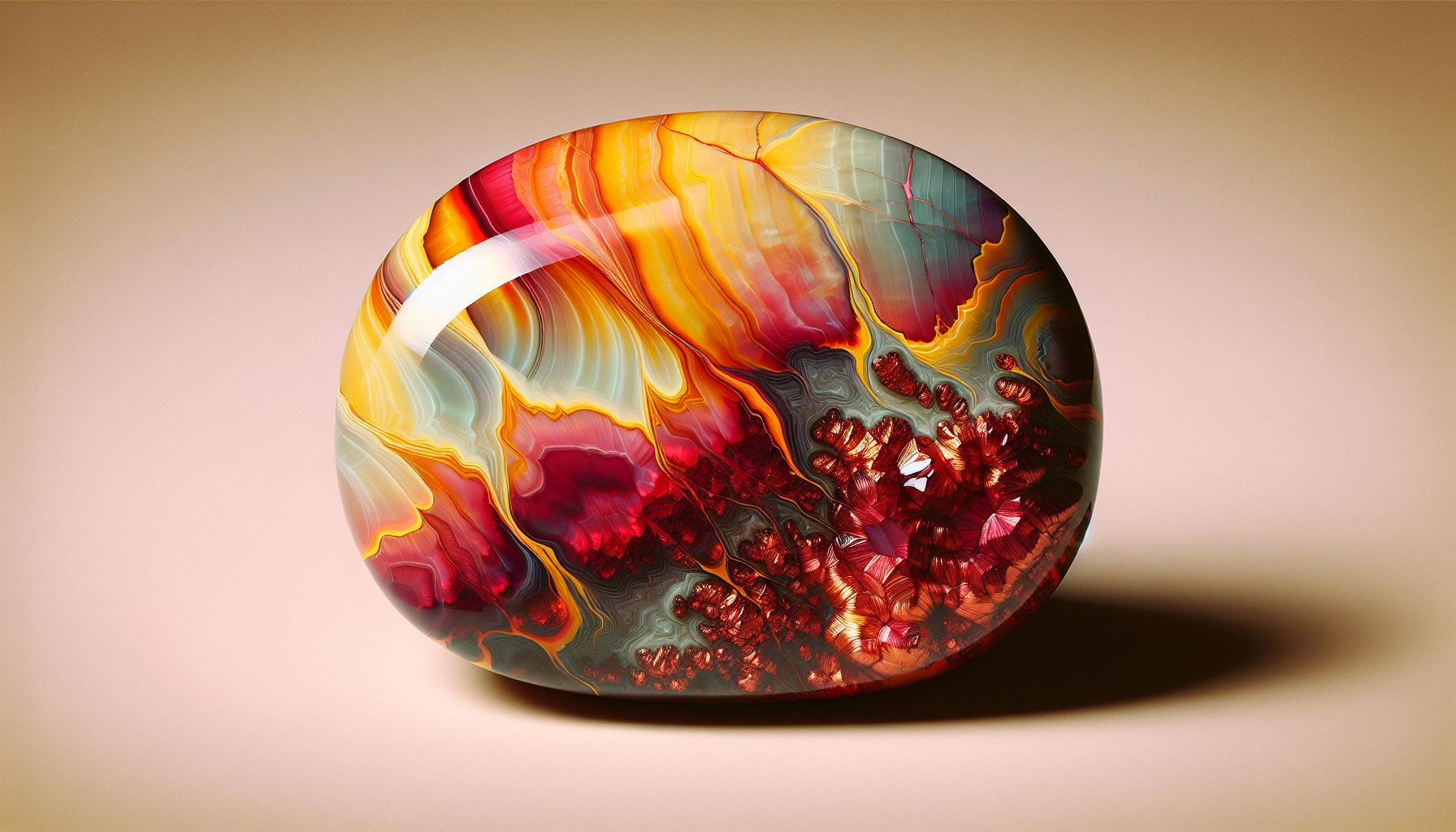
Oregon sunstones boast a variety of distinguishing physical characteristics that set them apart from other gemstones. Color is the most captivating feature, with a spectrum that ranges from pale yellow to deep red and green. These stones are famed for their copper inclusions, which create a unique and desirable phenomenon known as schiller, a glittering effect caused by light reflecting off these inclusions.
The texture of sunstones is also a notable characteristic. They can be transparent to translucent, with a luster that can be anywhere from glassy to pearly. One of the key traits you’ll look for is their crystal form, which typically exhibits a triclinic crystal system. This unique structure may not always be visible to the naked eye, especially in stones that have not been cut.
In terms of hardness, Oregon sunstones fall between 6 and 6.5 on the Mohs hardness scale, which means that while they’re durable enough for jewelry, they’re susceptible to scratches from harder materials. Their cleavage is generally described as perfect in two directions, which should be taken into account when they’re being cut for use in fine jewelry to prevent splitting.
When examining these sunstones for authenticity, keep an eye out for their specific gravity, which typically ranges from 2.62 to 2.65. This measurement can help distinguish real Oregon sunstones from artificial counterparts that often vary significantly in weight.
How Are Oregon Sunstone Formed?
Oregon sunstones are a gem-quality form of the mineral labradorite, which belongs to the plagioclase series of the feldspar group. These beautiful gemstones are formed deep within the Earth’s crust under immense heat and pressure. Over time, they make their way to the surface through a process called geological uplift, and are brought closer to the Earth’s surface by volcanic activity.
When you’re hunting for Oregon sunstones in the field, it’s essential to understand that they’re primarily found in areas with a history of volcanic activity. The minerals crystallize in molten lava flows and are ejected onto the surface during eruptions. The presence of copper impurities within the molten lava is what gives Oregon sunstones their distinctive shimmer and wide range of colors, from yellowish-green to reddish-orange.
As they cool, the lava encases the forming crystals, protecting them until they can be discovered. Once settled, erosion plays its part, freeing the sunstones from their volcanic prison and depositing them in the sediment where prospectors can find them.
To identify an area where sunstones may be found, look for geological conditions indicative of past volcanic activity. This could include basalt flows, tuff layers, or pumice deposits. The unique conditions in Oregon’s high desert are why the state is known for these particular sunstones.
Remember that the specific gravity and hardness of Oregon sunstones can be attributed to their formation process. Sunstones with higher copper content have a greater specific gravity, making this a key factor in distinguishing them from other similar-looking minerals.
Preparation for Oregon Sunstone Hunting
Before heading out on your adventure to find Oregon sunstones, preparing adequately will increase your chances of success and ensure a safe, enjoyable experience. You wouldn’t want to find yourself in the rugged outdoors without the essentials, so let’s gear up for sunstone hunting like a pro.
Gathering the Right Tools
Essential tools can make or break your sunstone hunting trip. Here’s what you’ll need:
- Geologist’s hammer for chipping and splitting rocks
- Shovel and trowel for digging through soil
- Sifting screens to separate dirt from potential sunstone gems
- UV flashlight to detect the fluorescent qualities of sunstones at dusk
- Field guide to verify the characteristics of Oregon sunstones on the go
- GPS device or map to navigate the terrain confidently
For an effective search, consider packing:
- Containers or bags to safely transport your findings
- Magnifying glass to inspect stones closely
- Tweezers for picking up small sunstones
Quality equipment will enable you to identify sunstone rough with ease and verify your findings with precision.
Safety Considerations
Your safety should always be the top priority. Sunstone hunting often involves being in remote outdoor areas, where preparation is key to avoid hazards:
- Wear protective gear such as gloves, sturdy boots, and safety goggles.
- Sun protection is crucial; pack sunscreen, a hat, and long-sleeved clothing.
- Bring enough water to stay hydrated in what could be a hot, arid environment.
- Have a first aid kit on hand for any minor injuries.
- Tell someone your plans and expected return time, just in case.
Check weather conditions and terrain specifics beforehand to prepare for any natural elements you may encounter. Being ready for the unexpected can save you from trouble and keep your focus on the treasure hunt.
Handling and Care of Found Oregon Sunstone

After identifying Oregon sunstones, proper handling and care are crucial to maintain their natural beauty and value. You’ll want to treat these gems with attention, whether you’re an avid collector or a first-time hunter.
Cleaning Oregon Sunstones
Once you’ve found some potential sunstone specimens, you’ll need to clean them. Start by removing any dirt or debris gently. You can use a soft brush, like a toothbrush, and lukewarm water. Avoid harsh chemicals or abrasive materials that might scratch the stone’s surface. Mild dish soap is safe to use if necessary. After scrubbing, rinse thoroughly with water.
Sometimes, the rough exterior of a sunstone masks its true beauty. If that’s the case, a professional lapidary can help. They’ll use specialized equipment to cut and polish your stones, enhancing their color and clarity. This should be done by experienced individuals, as improper techniques can damage the gemstone.
Storing Oregon Sunstones
Proper storage is equally important to prevent your sunstones from damage. Wrap each stone individually in a soft cloth or place it in a fabric-lined jewelry box to avoid scratches. If you’re storing multiple sunstones together, ensure they’re not in direct contact with each other; even though they have a hardness of about 6.5-7.2 on the Mohs scale, they can still scratch one another.
It’s best to keep sunstones out of prolonged direct sunlight—despite their name—as intense exposure can fade their unique hues over time. High temperatures can also harm them, so store your stones in a cool, dry place. Humidity can lead to cracks and fractures; using silica gel packets can help minimize moisture in your storage area.
For those wanting to display their Oregon sunstones, consider using a display case that filters UV light, which can also provide an added layer of protection against dust and environmental factors. Remember, even after the initial thrill of the find, taking good care of your Oregon sunstones ensures their luster and value remain unspoiled for years to come.
Conclusion: Confirming Oregon Sunstone is Real
Armed with the knowledge of visual cues and scientific tests, you’re now ready to confidently identify Oregon sunstones.
Remember, the unique glow and color range are your initial indicators but it’s the copper inclusions and specific gravity that truly set them apart. Once you’ve found a potential sunstone, proper care is crucial. Clean gently, store safely, and consider professional cutting to truly reveal the stone’s beauty. Whether you’re out in the field or assessing a find at home, your new skills will serve you well in distinguishing these natural treasures.
Keep these tips in mind and you’ll become adept at recognizing and caring for Oregon sunstones, adding a touch of sparkle to your collection.

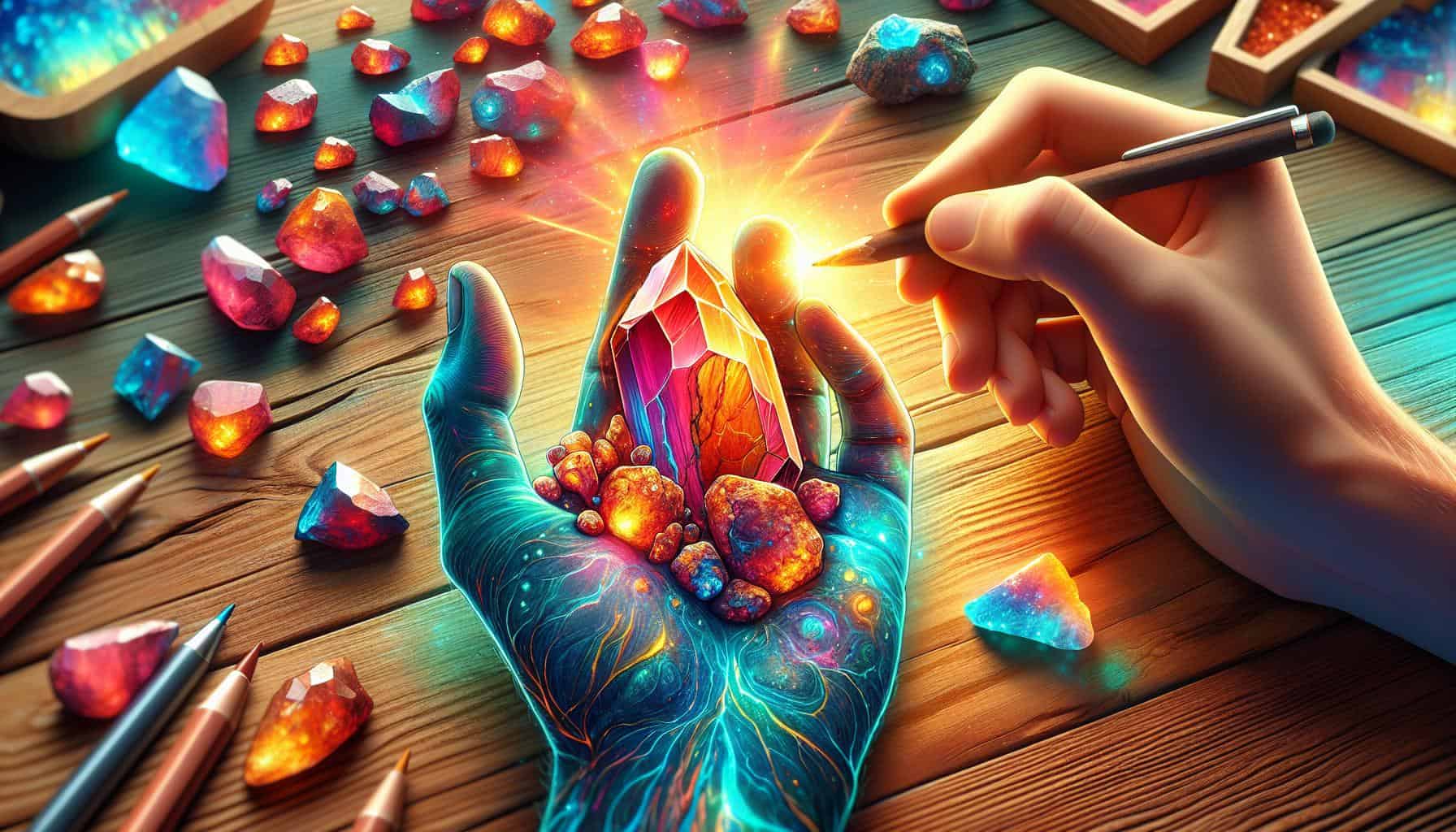
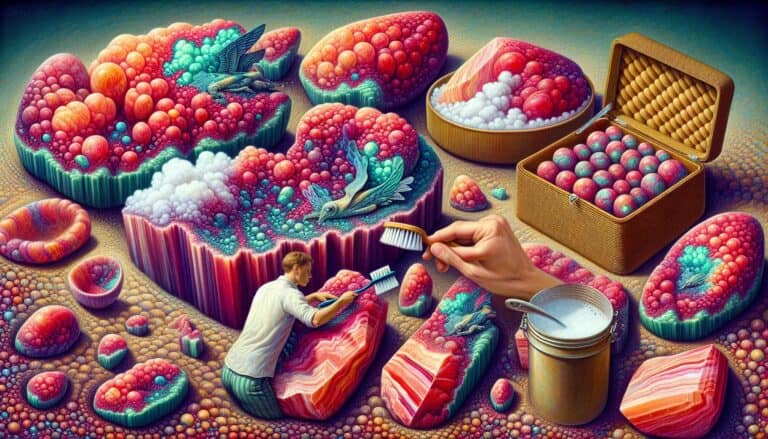
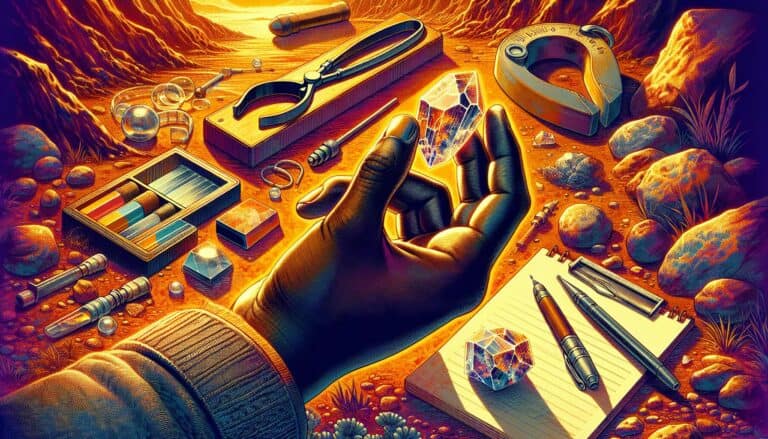
![Alabama Rockhounding Sites in [year]: Fossil & Mineral Spots](https://observationhobbies.com/wp-content/uploads/2024/01/SHOqOO3B-QS16Lqks0Ax9-768x439.jpg)

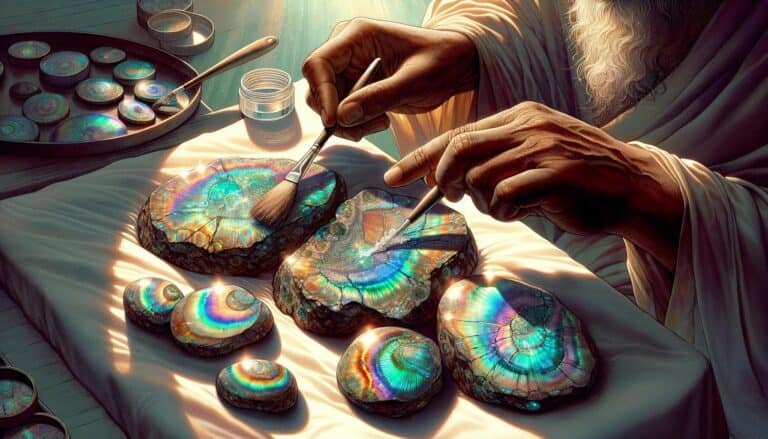
![California Rockhounding Sites [year]: Treasures & Locations](https://observationhobbies.com/wp-content/uploads/2024/01/in91C9Uhh0B9jCPhoUBGl-768x439.jpg)